
Roots
To truly understand how contemporary protective styles address hair fragility, one must first look deeply into the very nature of textured hair. It is not merely a collection of strands; it is a living crown, a complex biological marvel with a history as rich and varied as the individuals who wear it. Our exploration begins at the foundational level, delving into the intrinsic qualities that render textured hair uniquely susceptible to breakage and how this understanding shapes our approach to care.
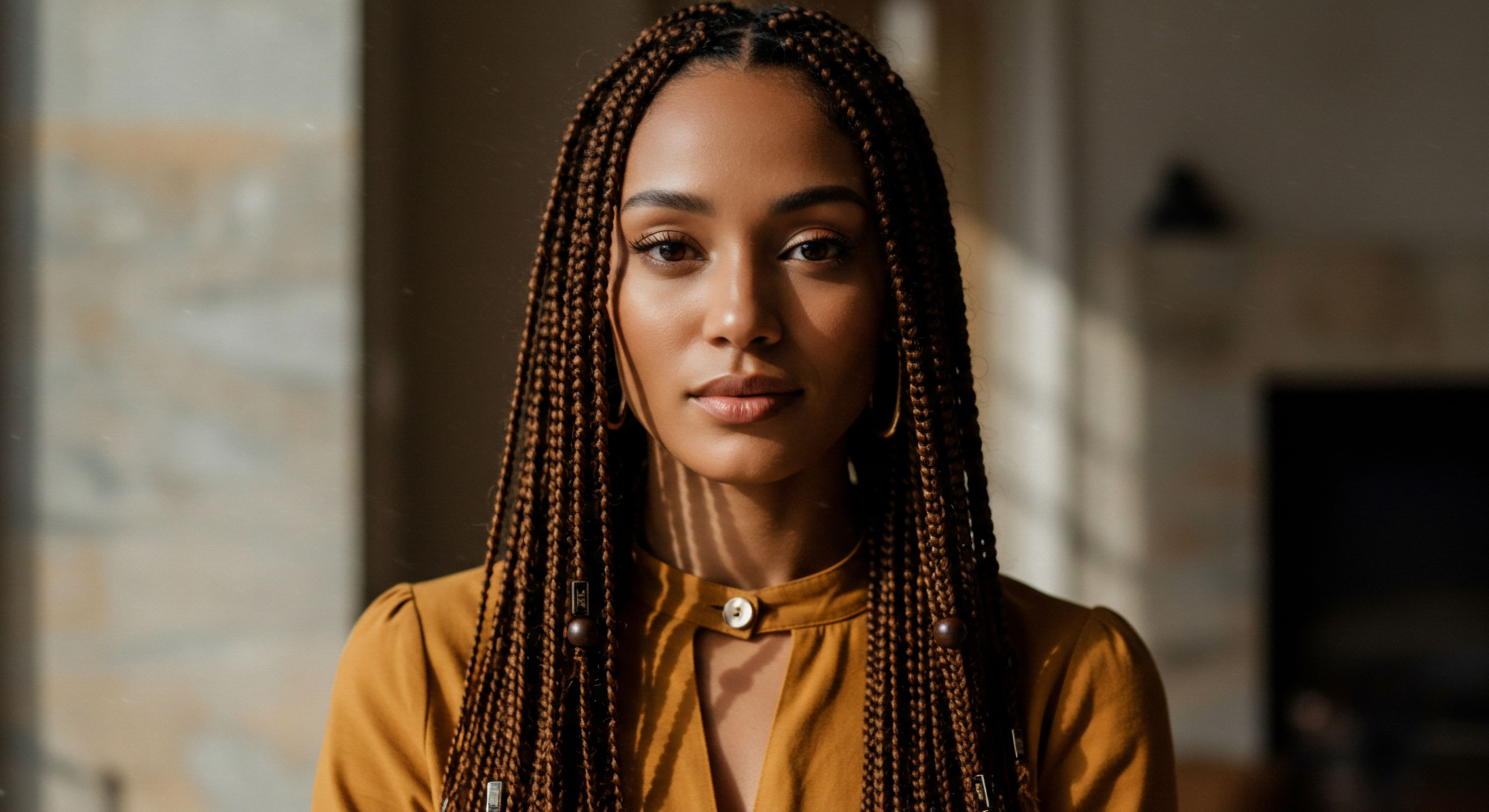
Hair Anatomy and Physiology Specific to Textured Hair
At its heart, hair is protein, primarily keratin, growing from follicles nestled within the scalp. While all human hair shares this fundamental composition, the story of textured hair diverges significantly at the follicular level. Unlike straight hair, which emerges from a round follicle, curly and coily strands originate from an oval or even flat follicle. This distinct shape dictates the hair shaft’s elliptical cross-section, causing it to bend and twist as it grows.
Each curve, each bend, represents a point of inherent structural vulnerability. Along these curvatures, the cuticle layers, those protective scales that lie flat on straight hair, tend to lift and become less uniformly aligned. This raised cuticle exposes the delicate inner cortex, making textured hair more prone to losing moisture and more susceptible to external damage from friction or environmental stressors. The uneven distribution of keratin within the curved shaft further contributes to this fragility, creating areas of varying strength along a single strand.

Textured Hair Classification Systems
The diverse spectrum of textured hair has given rise to various classification systems, most notably the Andre Walker typing system (1A-4C) and the LOIS system (L-O-I-S for curl shape, O for texture, I for density, S for porosity). While these systems offer a helpful shorthand for describing curl patterns, their utility in truly understanding hair fragility extends beyond simple categorization. A 4C coil, for instance, with its tight, Z-shaped pattern, presents more points of inflection and, consequently, more opportunities for breakage than a looser 3A curl. Understanding where one’s hair falls within these classifications helps in predicting its needs and sensitivities.
A finer, less dense strand, regardless of its curl pattern, may require a gentler touch and different protective strategies than a coarser, more voluminous counterpart. These systems, when viewed through the lens of hair health, guide us toward personalized care, moving beyond superficial appearance to the underlying structural realities.
Textured hair’s inherent bends and lifted cuticles render it uniquely vulnerable to fragility, necessitating a deep understanding of its structure for effective care.

The Essential Lexicon of Textured Hair
To truly speak the language of textured hair health, one must grasp a few key terms that go beyond curl type. These concepts are foundational to comprehending hair fragility:
- Elasticity ❉ This refers to hair’s ability to stretch and return to its original length without breaking. Healthy hair possesses good elasticity; hair that snaps easily when stretched lacks it, signaling fragility.
- Porosity ❉ This describes hair’s ability to absorb and retain moisture. High porosity hair has very open cuticles, absorbing water quickly but losing it just as fast, leading to dryness and susceptibility to breakage. Low porosity hair has tightly closed cuticles, resisting moisture absorption but retaining it well once hydrated.
- Tensile Strength ❉ This measures the amount of stress hair can withstand before breaking. Textured hair generally has lower tensile strength than straight hair due to its structural characteristics.
- Hygral Fatigue ❉ This phenomenon describes the damage caused by repeated swelling and shrinking of the hair shaft as it absorbs and loses water. High porosity hair is particularly susceptible, as its open cuticles allow rapid water entry and exit, weakening the hair over time.
Grasping these terms allows for a more precise diagnosis of hair health and informs the selection of appropriate protective measures.

Hair Growth Cycles and Influencing Factors
Hair growth follows a cyclical pattern ❉ anagen (growth), catagen (transition), and telogen (rest/shedding). For textured hair, factors influencing these cycles can significantly impact overall hair health and perceived fragility. Nutritional deficiencies, stress, hormonal shifts, and certain medications can disrupt the anagen phase, leading to premature shedding or slower growth.
Environmental elements, such as harsh winds, dry climates, or excessive sun exposure, can also compromise the hair shaft, particularly the exposed ends. Understanding these internal and external influences allows for a more holistic approach to hair health, recognizing that protective styles are but one piece of a larger wellness puzzle.

Ritual
Stepping from the foundational understanding of textured hair, we now turn our attention to the daily and periodic practices that sculpt its vitality. Protective styles, at their best, are not merely aesthetic choices; they are a mindful practice, a ritual of preservation designed to shield fragile strands from the relentless tug of daily manipulation and environmental exposure. The art of protective styling, when approached with care and knowledge, transforms into a powerful ally against hair fragility.

Protective Styling Encyclopedia
Protective styles encompass a broad spectrum of hairstyles designed to keep the hair tucked away, minimizing exposure to environmental stressors and reducing mechanical manipulation. The fundamental purpose is to reduce breakage, retain length, and allow the hair to rest and flourish.
- Braids ❉ This category includes box braids, knotless braids, cornrows, and plaits. They involve intertwining sections of hair, often with added extensions, to create a secure, contained style. Braids, when installed correctly, reduce tangling and friction.
- Twists ❉ Two-strand twists, flat twists, and Marley twists are popular choices. They involve wrapping two sections of hair around each other, providing a gentle alternative to braids, often with less tension.
- Buns and Updos ❉ Simple buns, chignons, and more elaborate updos can be protective when the ends are fully tucked away and the style is not pulled too tightly.
- Locs ❉ While a long-term commitment, properly maintained locs inherently offer a protective structure, as the hair is matted and intertwined, reducing daily manipulation.
- Wigs and Weaves ❉ These offer versatility while allowing natural hair to be braided down and shielded underneath. Their protective quality depends heavily on the installation method and underlying care.

Techniques for Fragility Mitigation
The efficacy of a protective style in addressing hair fragility hinges on its execution and subsequent care. Improper installation can negate any protective benefits and even cause harm.
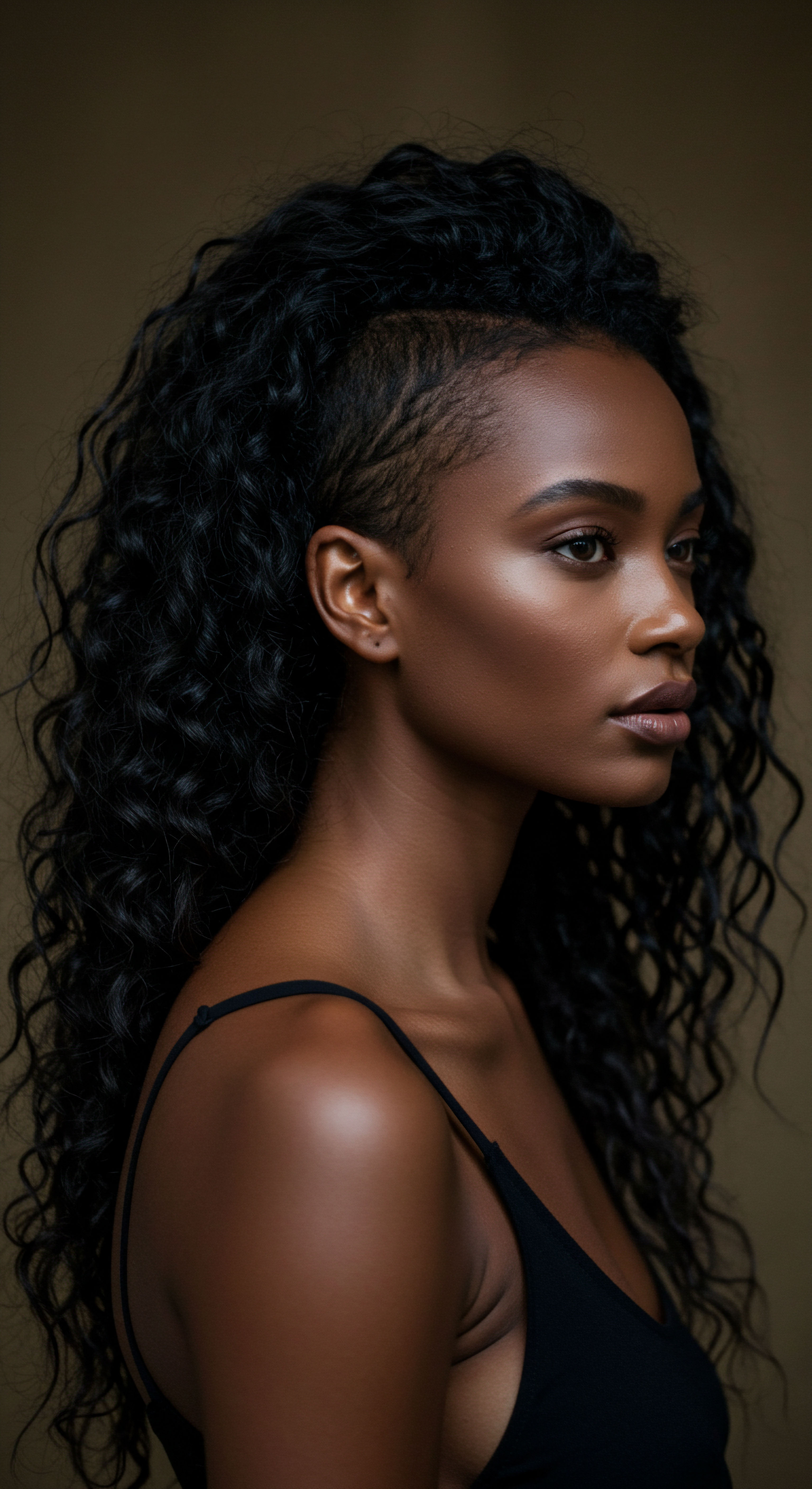
How can Proper Installation Techniques Reduce Breakage?
The initial step in any protective style involves careful preparation. Hair should be thoroughly cleansed, deeply conditioned, and detangled with patience, preferably while damp and saturated with a slippery conditioner. Sectioning the hair neatly helps manage the process and ensures even tension. When braiding or twisting, the tension should be firm enough to secure the style but never painful.
The hairline, often referred to as the “edges,” is particularly delicate and prone to traction alopecia if subjected to excessive pulling. Leaving these fine hairs out or styling them with minimal tension is a wise practice. The weight of added extensions also warrants consideration; heavy extensions can strain the hair follicle, leading to breakage or permanent loss over time.

What is the Importance of Moisturizing While Styled?
Once installed, protective styles can make regular moisturizing more challenging, yet it remains absolutely vital. The hair, though tucked away, still needs hydration. Lightweight leave-in conditioners, hair mists, and natural oils can be applied directly to the scalp and along the visible hair strands.
This helps combat the inherent dryness of textured hair and prevents the strands from becoming brittle within the style. A moisturized scalp also prevents itching and flaking, which can lead to scratching and further manipulation.

Choosing the Right Style
Selecting a protective style requires a thoughtful consideration of individual hair characteristics and lifestyle.
| Factor Hair Type and Density |
| Guidance for Hair Fragility Finer, lower-density hair requires lighter styles and less tension. Coarser, higher-density hair can tolerate more substantial styles, but still needs gentle handling. |
| Factor Length and Health |
| Guidance for Hair Fragility Shorter hair may be better suited for twists or flat cornrows. Chemically treated or heat-damaged hair needs styles with minimal tension and no added weight. |
| Factor Lifestyle |
| Guidance for Hair Fragility Active individuals may prefer styles that remain secure during movement, but still allow for scalp access for cleansing. |
| Factor Duration |
| Guidance for Hair Fragility Protective styles are not meant to be permanent. Most experts recommend keeping styles for no longer than 6-8 weeks, with a break in between. |
Thoughtful application and consistent hydration transform protective styles into true guardians of hair health.
The ritual of protective styling, when approached with this conscious understanding, becomes a powerful tool against fragility, allowing textured hair to flourish in its natural splendor.

Relay
Moving beyond the foundational elements and the practical applications, our understanding of contemporary protective styles addressing hair fragility deepens as we consider the complex interplay of biophysics, psychology, and cultural resonance. The very act of protecting textured hair transcends mere aesthetics, becoming a dialogue between scientific principles and lived experience, often revealing surprising truths.

The Biophysics of Protection
Protective styles, at their most effective, function as biophysical interventions. They strategically minimize the mechanical stress and environmental exposure that can severely compromise hair integrity.

How do Styles Physically Reduce Mechanical Stress?
The inherent curl pattern of textured hair, while beautiful, creates natural points of weakness where the hair shaft bends and twists. These curvatures are susceptible to damage from daily manipulation, such as combing, brushing, and styling. A study conducted on curly hair, for instance, revealed it requires significantly more combing force—between 5 to 50 times more—than straight hair, underscoring its mechanical vulnerability. Protective styles, by tucking away the hair ends and containing the bulk of the strands, drastically reduce this constant mechanical friction and tension.
When hair is secured in braids or twists, the individual strands are less exposed to external forces that can lead to cuticle damage, tangles, and subsequent breakage. This reduction in daily handling allows the hair’s natural cuticle layers to remain smoother, minimizing snagging and preserving the internal cortical structure.

What Role does Environmental Exposure Play in Hair Fragility?
Environmental elements such as wind, sun, and fluctuating humidity can dehydrate hair, making it brittle and more prone to breakage. The raised cuticle of textured hair means it can lose moisture more readily to the atmosphere. Protective styles act as a physical barrier, shielding the hair from these harsh external factors.
For example, a braided style reduces the surface area of hair exposed to dry air or intense UV radiation, thereby helping to retain moisture and prevent the oxidative damage that sunlight can cause to keratin proteins. This consistent protection from the elements allows the hair to maintain a more stable moisture balance, contributing to its overall resilience.

Psychological and Cultural Dimensions
The choice to wear protective styles extends far beyond physical benefits; it is deeply intertwined with identity, self-perception, and a rich cultural heritage. These styles have historically served as acts of resilience and beauty, connecting individuals to ancestral practices.

How do Protective Styles Intersect with Identity and Self-Perception?
For many with textured hair, hairstyles are not merely decorative; they are powerful expressions of cultural identity and personal narrative. The adoption of protective styles can signify a journey of self-acceptance, a reclaiming of natural beauty, or a connection to a collective heritage. This deliberate choice can positively influence self-perception, fostering a sense of pride and confidence that contributes to overall well-being.
Conversely, societal pressures and Eurocentric beauty standards have historically pushed individuals to alter their natural hair textures, often through damaging chemical processes or excessive heat. Protective styles can offer a reprieve from these pressures, allowing individuals to nurture their hair in a way that honors its natural state.
However, it is crucial to acknowledge a complex, sometimes controversial, aspect of protective styling ❉ the potential for unintended harm if not executed with knowledge and care. While intended to shield, overly tight styles or prolonged wear can lead to a condition known as Traction Alopecia. This form of hair loss results from continuous pulling on the hair follicles, particularly along the hairline, leading to thinning or permanent baldness in severe cases. A community-based cross-sectional study conducted in North Sudan revealed that one in four women (25.0%) participating had traction alopecia, highlighting a significant prevalence in populations where tight hairstyles are culturally common.
This statistic underscores the delicate balance required ❉ protective styles offer immense benefits, yet awareness and proper technique are paramount to avoid counteracting their intended purpose. The conversation around protective styles must therefore include education on healthy installation and maintenance to truly serve their protective role.

Beyond the Style
The effectiveness of contemporary protective styles in addressing hair fragility is not solely dependent on the style itself, but also on the holistic care surrounding it.
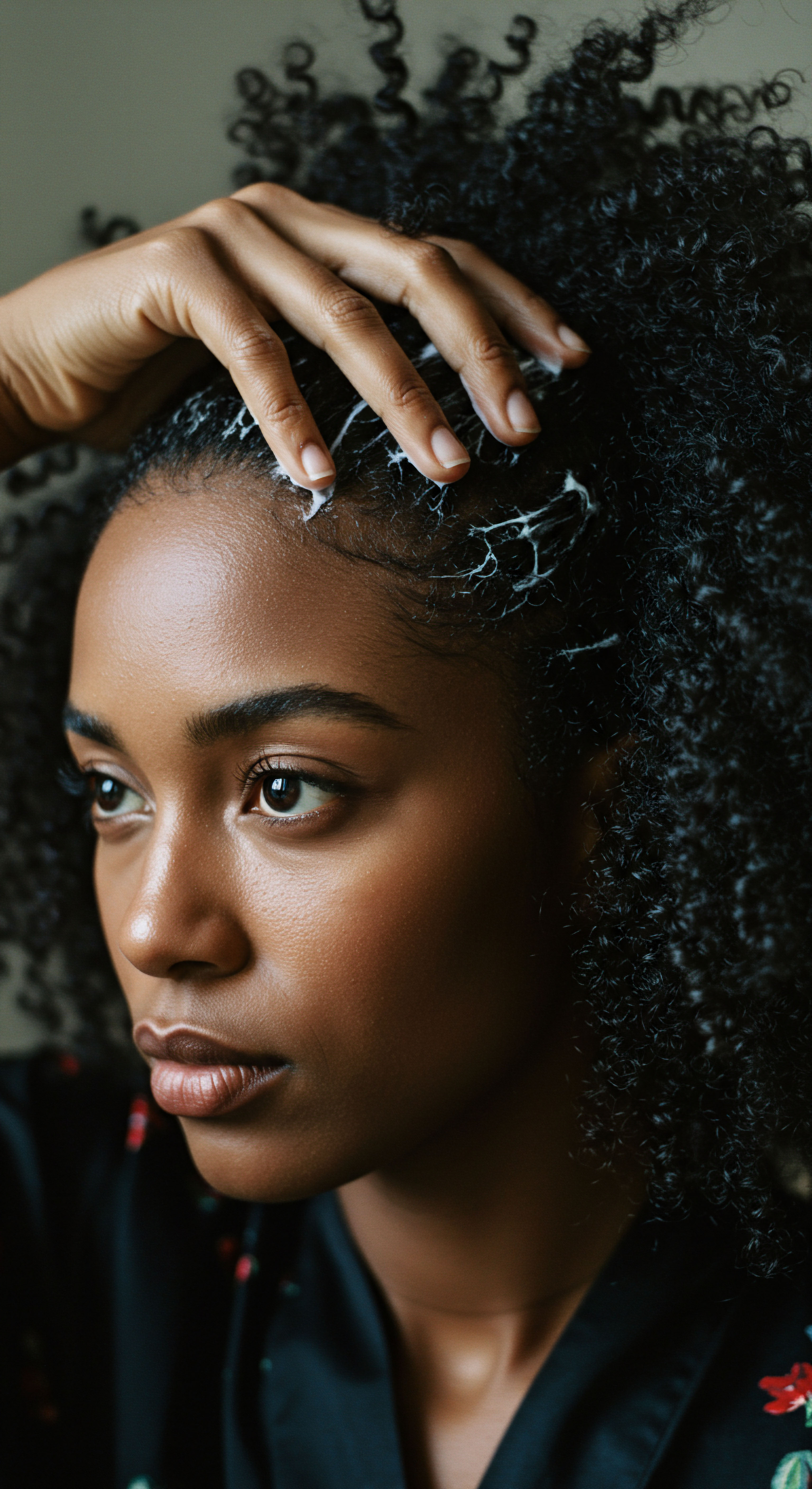
What is the Role of Pre and Post Styling Care?
The condition of the hair before a protective style is installed significantly impacts its health during the wear period. Hair that is already dry, brittle, or damaged will not miraculously heal within a protective style; in fact, it may worsen if neglected. Proper pre-styling care involves deep conditioning, ensuring the hair is well-hydrated and supple. Similarly, post-styling care, particularly the careful and gentle removal of the style, is paramount.
Rushing the takedown can cause more breakage than weeks of wear. Detangling in small sections with ample conditioner, patience, and the right tools (like a wide-tooth comb) helps to preserve the newly retained length.

How does Product Selection Influence Fragility?
The products used both within and outside of protective styles play a pivotal role. Products that provide lasting moisture without heavy build-up are ideal. Lightweight oils, moisturizing sprays, and leave-in conditioners can be applied to the scalp and hair within the style to maintain hydration.
Conversely, products that cause excessive dryness, contain harsh alcohols, or lead to significant residue can undermine the protective benefits. The interaction between product chemistry and hair biology is a critical consideration for mitigating fragility.
- Cleansing ❉ Use a sulfate-free shampoo to cleanse the scalp and hair without stripping natural oils.
- Conditioning ❉ Apply a rich conditioner, focusing on the ends, and consider a deep conditioning treatment weekly or bi-weekly.
- Moisturizing ❉ Use leave-in conditioners and light oils to keep hair hydrated, especially when in protective styles.
- Detangling ❉ Always detangle hair gently when damp, using a wide-tooth comb or fingers, starting from the ends and working upwards.
Protective styles are a powerful defense against hair fragility, but their true strength lies in mindful execution and a deep appreciation for the hair’s cultural significance.
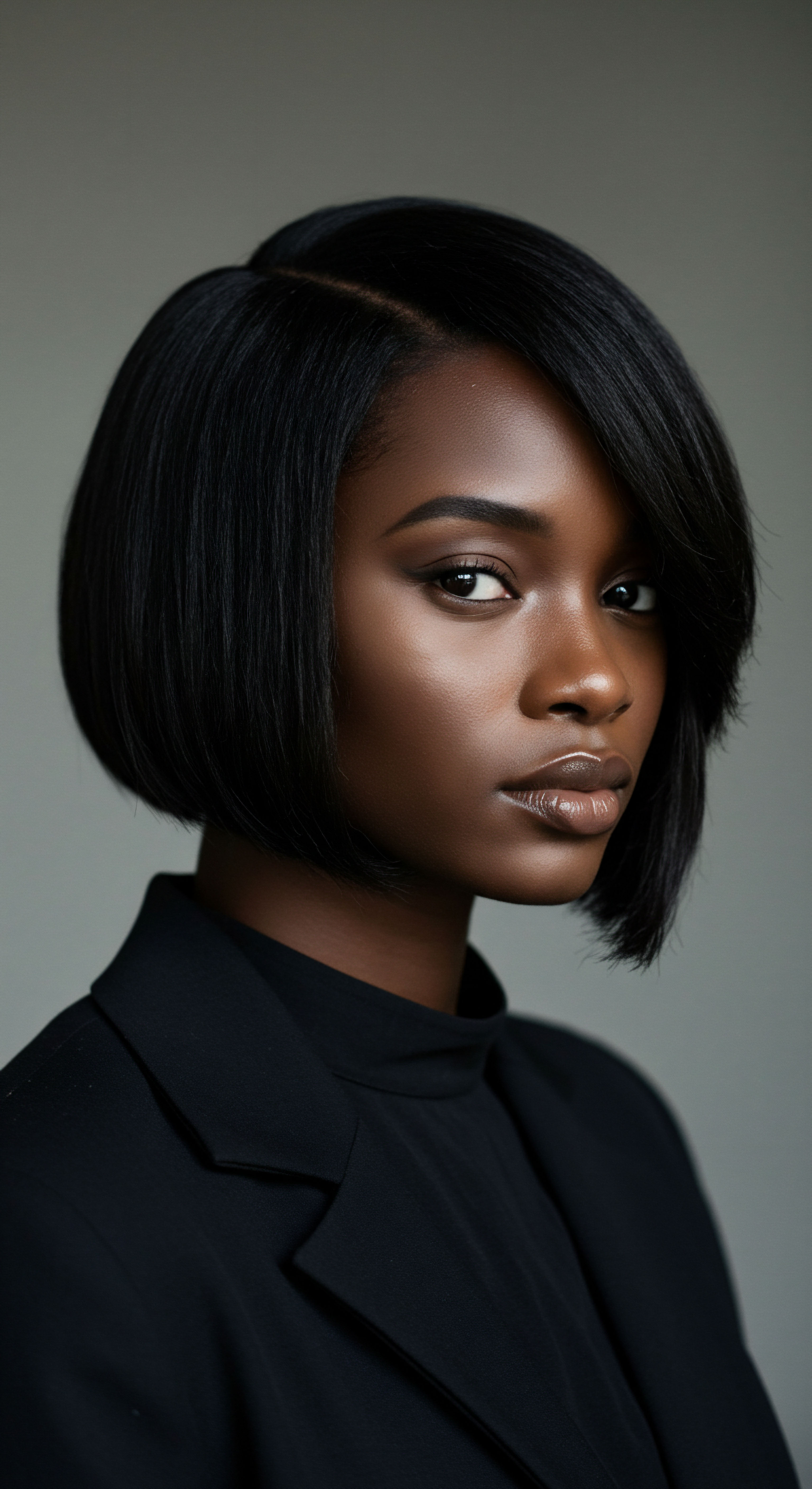
Societal Perceptions and Hair Health
The broader societal context also impacts how protective styles address hair fragility. Discrimination based on hair texture and style, often termed hair discrimination, can influence individuals to choose styles that are perceived as “professional” or “acceptable” in certain environments, even if those styles compromise hair health. This pressure can lead to repeated chemical straightening or tight styles that strain the hair, contributing to fragility over time.
Advocating for hair acceptance and celebrating the natural diversity of textured hair creates an environment where individuals feel empowered to prioritize their hair’s health, choosing styles that genuinely protect without fear of judgment or professional repercussions. This cultural shift is as important as any scientific discovery in truly addressing hair fragility.

Reflection
The journey through the delicate world of textured hair fragility and the protective styles designed to shield it reveals a truth both profound and personal. It is a story not simply of strands and follicles, but of heritage, resilience, and the quiet, persistent act of care. From the microscopic architecture of a curl to the sweeping cultural narratives woven into each braid, the contemporary approach to protective styling stands as a testament to evolving knowledge and enduring wisdom. We have seen how science illuminates the vulnerabilities inherent in curl patterns, prompting us to seek gentle methods.
We have walked through the practical rituals that transform styling into a mindful practice of preservation. And we have considered the deeper societal currents that shape our hair choices, sometimes pushing against, sometimes celebrating, the very textures we seek to protect. The conversation around hair fragility is thus an invitation to listen more closely to our bodies, to honor our traditions, and to cultivate a space where every coil and curl can flourish, unburdened and truly free.
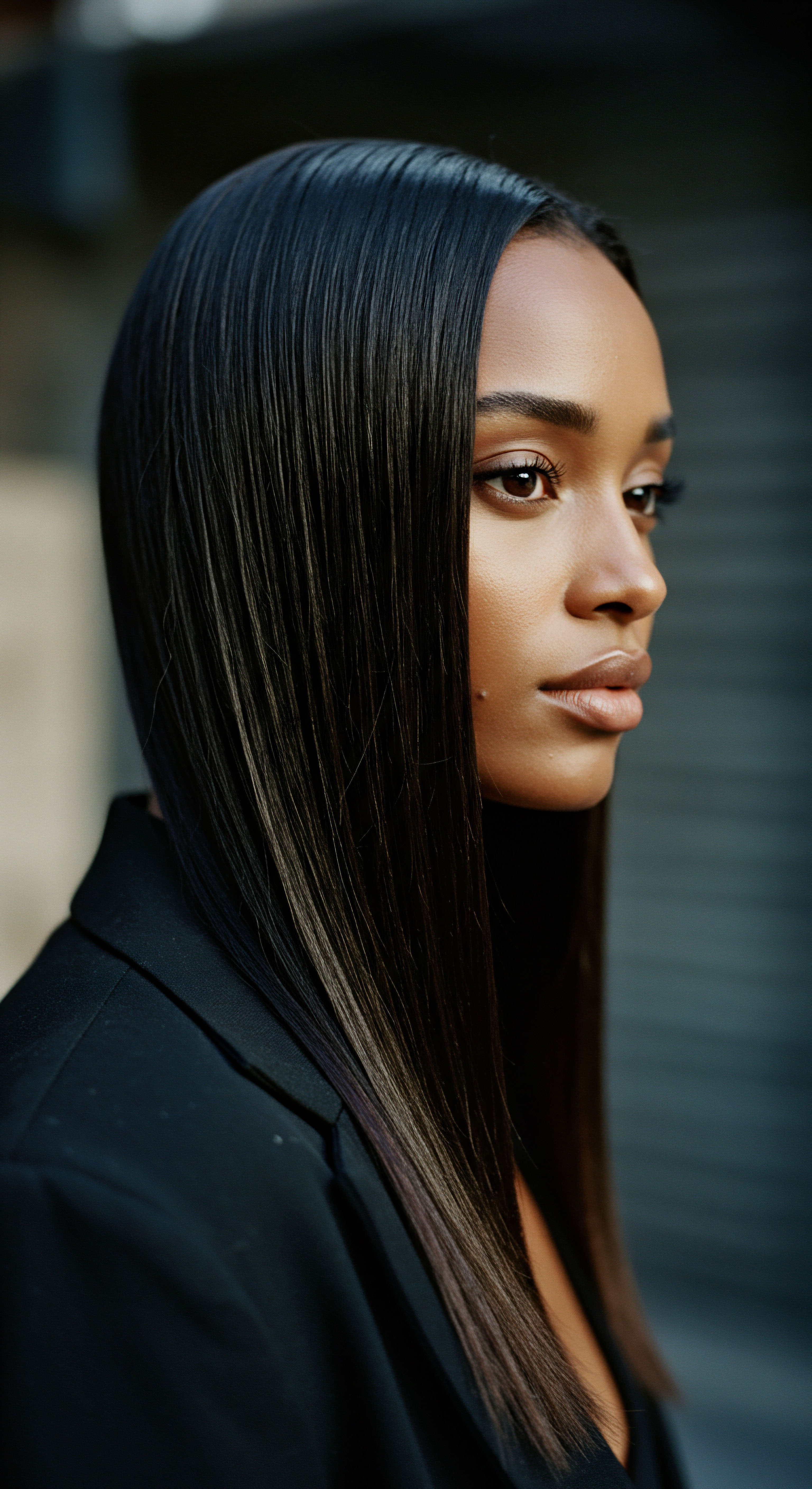
References
- Khumalo, N. P. et al. (2008). “Traction alopecia ❉ the root of the problem.” Clinical, Cosmetic and Investigational Dermatology, 1, 127-133.
- McMichael, A. J. (2016). “Traction Alopecia ❉ The Great Mimicker.” Journal of the American Academy of Dermatology, 74(3), 566-572.
- Samrao, A. et al. (2011). “The ‘fringe sign’ in traction alopecia.” Dermatology Online Journal, 17(3), 1.
- Khumalo, N. P. et al. (2010). “Hair care practices and scalp disorders in African-American girls.” Archives of Dermatology, 146(12), 1399-1404.
- Billero, V. & Miteva, M. (2018). “Traction alopecia ❉ the root of the problem.” Journal of the American Academy of Dermatology, 79(1), 163-172.
- Gathers, D. R. & Khumalo, N. P. (2016). “Central centrifugal cicatricial alopecia ❉ an update.” Dermatologic Clinics, 34(2), 195-201.
- Okereke, J. C. et al. (2019). “Hair Transplantation in Traction Alopecia.” Plastic and Reconstructive Surgery Global Open, 7(1), e2055.
- Haskin, A. & Aguh, C. (2016). “Hair practices and disorders in African American women.” Journal of the American Academy of Dermatology, 75(6), 1215-1224.
- Mirmirani, P. & Khumalo, N. P. (2014). “The ‘tenting sign’ in traction alopecia ❉ a clinical sign of excessive tension in braided hairstyles.” International Journal of Trichology, 6(4), 169-170.
- Zhu, H. et al. (1990). “A study of traction alopecia in Chinese women.” International Journal of Dermatology, 29(10), 712-714.